Ricinus communis, Castorbean
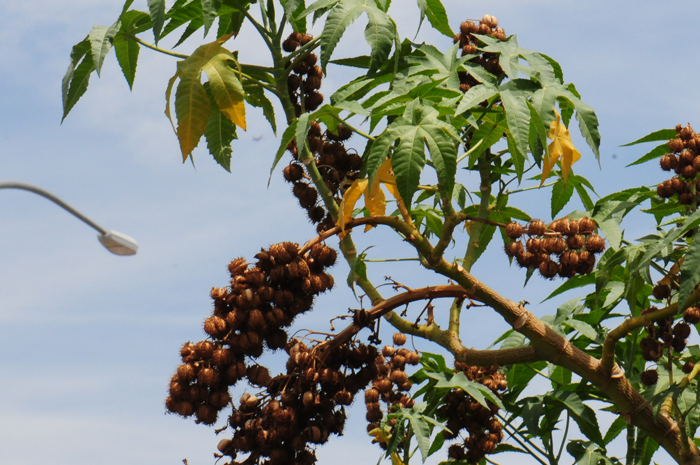
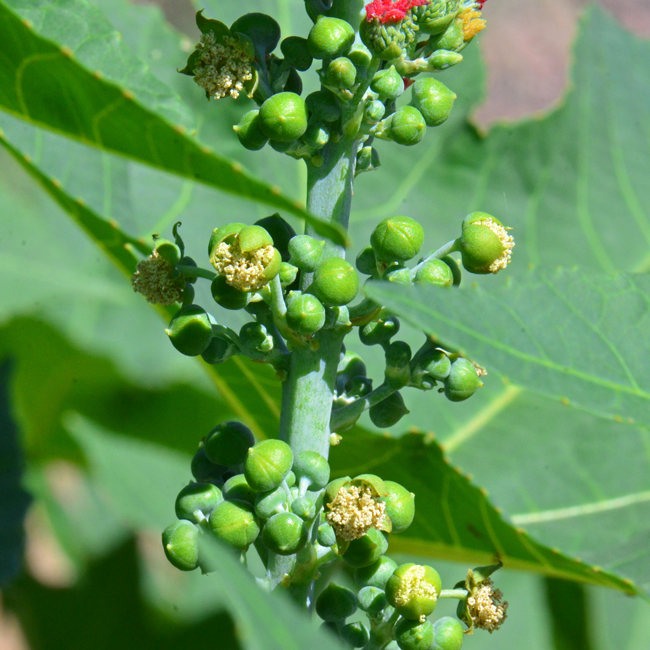
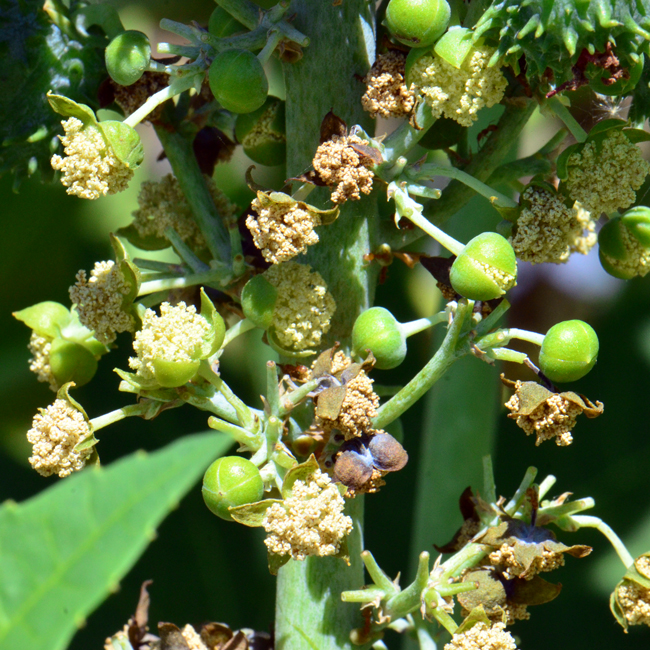
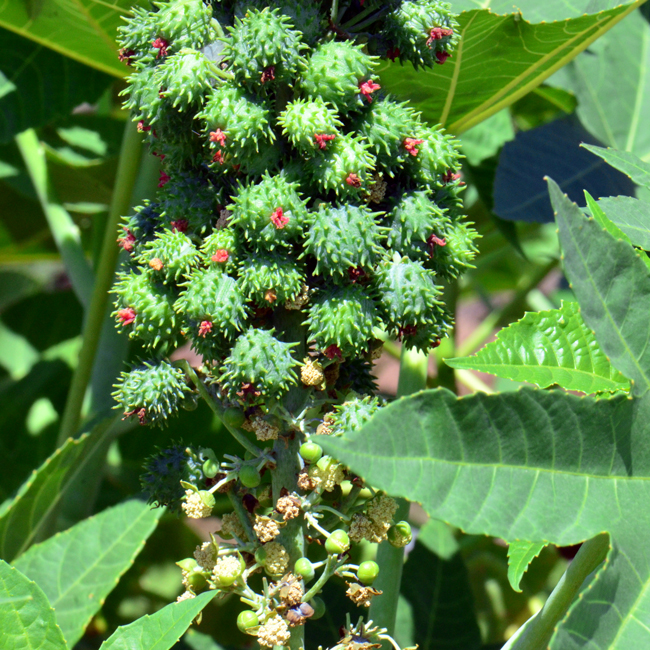
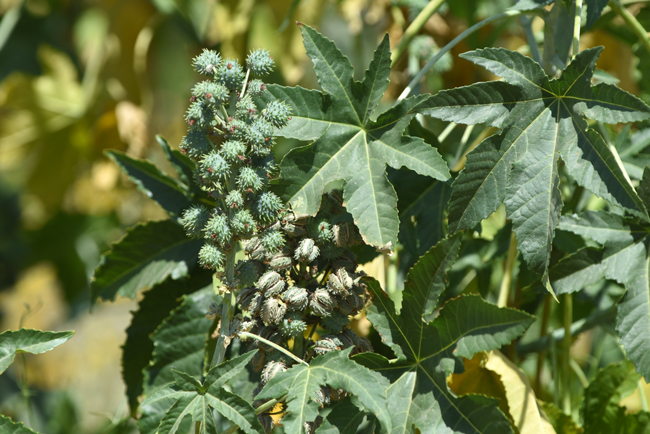
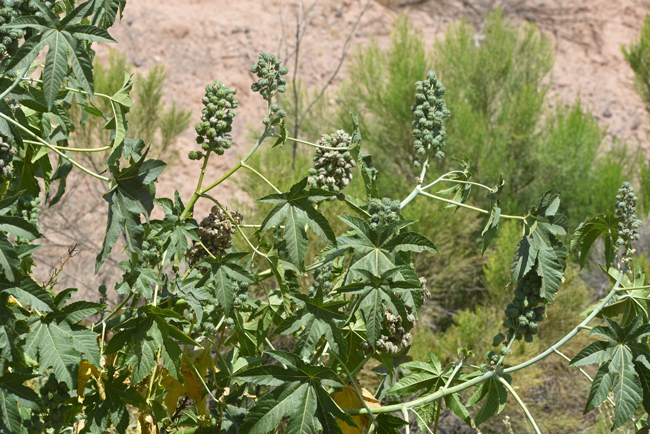
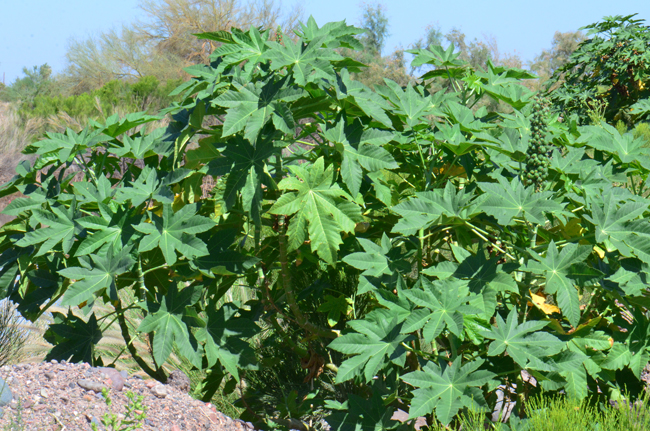
Scientific Name: Ricinus communis
Common Name: Castorbean
Also Called: Castor Bean, Castor-Bean, Agaliya, Lama Palagi, Maskerekur, Toto ni Vavalagi, Uluchula Skoki, (Spanish: Higuerilla, Higuera del Diablo, Ricino, Palma Christi)
Family: Euphorbiaceae, Spurge or Euphorbia Family
Synonyms: (Ricinus communis var. lividus, Ricinus communis var. megalospermus)
Status: Introduced
Duration: Perennial
Size: About 9 feet more or less, (3 m)
Growth Form: Shrub or Tree-like; plants ascending to erect; plants glabrous, fast growing with sufficient water and high temperatures, does not withstand cold temperatures; becomes suffrutescent with age, looks more herbaceous than tree-like.
Leaves: Green, sometimes with a reddish tinge, glossy, young leaves often dark reddish purple or bronze, long petiole, alternate, palmate with 5 to 7 or 12 lobes, lobes deeply serrate, glabrous.
Flower Color: Yellow (male) red (female)based on visible floral parts; inflorescence a terminal panicle; staminate without anthers, anthers yellow; pistillate flowers borne on tip of the inflorescent spike with 3 red styles; staminate flowers are proximal to the pistillate flowers; fruit spiny capsule, seeds (the caster bean) highly poisonous.
Flowering Season: June to November or year-round.
Elevation: Below 1,000 feet (300 m).
Habitat Preferences: Variable, personal observations suggest plants usually found near wet or damp disturbed areas, river bottoms; also found in disturbed areas, fields and roadsides.
Recorded Range: Native to southeastern Mediterranean Basin, Eastern Africa and India, now widespread through tropical regions. In Mexico it is recorded from Chiapas, Chihuahua, Coahuila, Colima, Federal District, Guanajuato, Guerrero, Jalisco, State of Mexico, Michoacán, Morelos, Nayarit, Oaxaca, Sinaloa, Sonora, Tabasco, Tamaulipas, Tlaxcala, Veracruz, Yucatan (Villaseñor and Espinosa, 1998). Widely grown as an ornamental.
North America & US County Distribution Map for Ricinus communis.
U.S. Weed Information: In North America Ricinus communis can be weedy or invasive according to the following authoritative sources: California Invasive Plant Council. 2006. California Invasive Plant Inventory. Cal-IPC Publication 2006-02 (1 February 2007). California Invasive Plant Council. Berkeley, California; Florida Exotic Pest Plant Council. 1999. Invasive plant list. Florida Exotic Pest Plant Council. Florida; Whitson, T.D. (ed.) et al.. 1996. Weeds of the West. Western Society of Weed Science in cooperation with Cooperative Extension Services, University of Wyoming. Laramie, Wyoming. Plants included here may become weedy or invasive.
Invasive/Noxious Weed Information: No information available.
Wetland Indicator: No information available. In North America species has the following wetland designations: Arid West, FACU; Atlantic and Gulf Coastal Plain FACU; Eastern Mountains and Piedmont UPL; Great Plains FACU; Midwest FACU; Northcentral & Northeast FACU; Western Mountains, Valleys, and Coast FACU.
FACU = Facultative Upland, usually occur in non-wetlands, but may occur in wetlands.
Threatened/Endangered Information: No information available.
Comments: In Arizona in the 1950's and 1960's this species was planted in gardens and yards to remove gophers. The belief was that the gophers would succumb after ingesting the toxic roots. There is no evidence to suggest this method was effective.
The seeds are the source of Castor oil.
This species contains the highly toxic ricin which is reportedly extremely allergenic. There are many "Cultivars" of Ricinus communis.
The plants are extremely dramatic in appearance and are used in parks and other public places.

